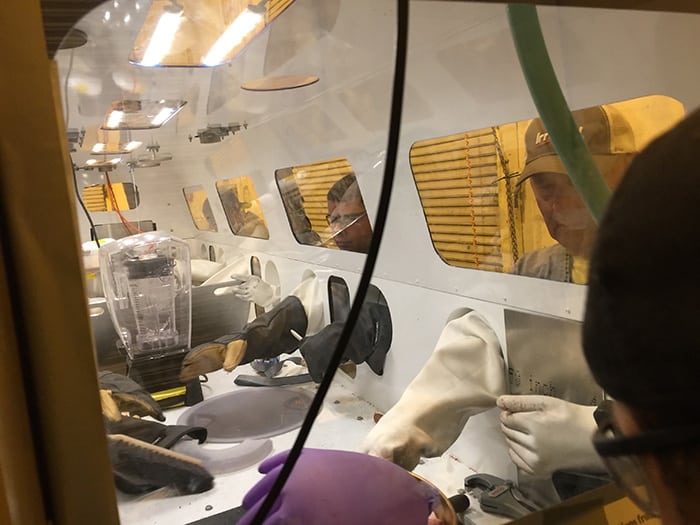
On Nov.6 the Los Alamos Fire Department responded to the highly-secure Plutonium Facility at the national laboratory for a report of a fire inside a glovebox used to manipulate radioactive material.
A lab spokesperson said the room was reopened on Nov. 16, though a report on the incident, written by Los Alamos, appeared to say that the room had been released Nov. 20. The affected glovebox was still out of service except for recovery of materials inside, according to the lab’s report, which was dated Dec. 8.
On the day of the incident, an employee at Los Alamos National Laboratory’s (LANL) Actinide Material Processing and Power, Materials Recovery and Recycle Group was performing an operation using a “Cremated Remains Machine” inside a glovebox within the Plutonium Facility at Technical Area 55 when they saw sparks and a fire after closing the lid and turning on the machine.
Operators in the vicinity of the glovebox activated two drop box fire alarms, after which radiological control technicians in the room performed full body scans, checked the hallway, and evacuated the room.
The Los Alamos Fire Department was dispatched, and found no visible flames, smoke, or fire once firefighters arrived on scene. Access to the room and the associated lab area was shut.
About an hour later the facility director declared a “potential inadequate safety analysis,” meaning the building’s safety procedures may not have anticipated an event like the fire in the cremated remains machine. There were no effects on personnel health, safety, the facility, or the environment, the report on the incident said.
The Nov. 6 fire was rooted in the cleanup of legacy radioactive material, or material leftover from projects that are not active anymore, that began On Nov. 1. Employees began to remediate the legacy material, which required checking for flammability.
Those operations were what led to the brief fire.
At 2 p.m. on Nov. 6, lab personnel were physically testing potentially radioactive items. Two of these items were separated into a pewter container after showing signs of sparking, the report said. A third item was tested and did not show signs of reactivity.
Forty five minutes later, an employee placed legacy material into the processing drum of the cremated remains machine, closed the lid, and turned it on. This immediately caused sparks and a flash, which then started a fire. The employee was not able to activate the fire alarm inside the glovebox because of the fire, the report said.
About ten minutes after the incident, according to a timeline of events included in the report, other employees activated fire alarms in two other gloveboxes nearby. The room was evacuated, and the corridor was isolated. All personnel were directed away from the fire and received full body scans to check for contamination.
The fire department arrived at 3:15 p.m. and checked the lab for fire, arriving at the room where the incident occurred two minutes later. The fire had already been extinguished.
By 4:30, lab technicians had checked the fire area for potential radioactivity but detected none, the report said.